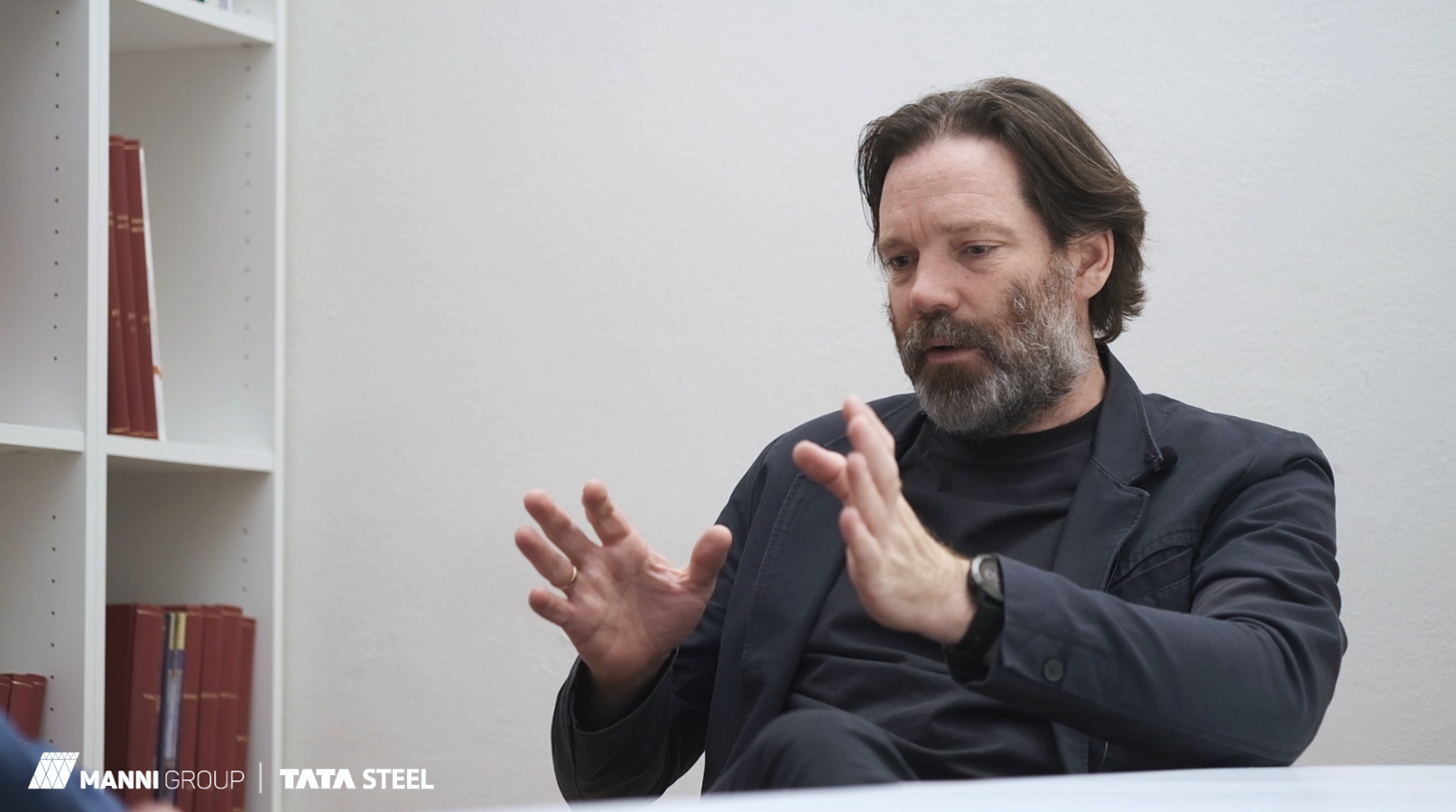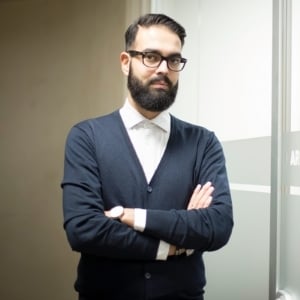Today’s star, in the context of the cycle of interviews by Manni Group on the occasion of the new edition of YAC Academy, is the firm Snøhetta, with Patrick Luth, one of the leading names in the world of architecture and current director of the Austrian office.
This is what you’ll find in this priceless content:
Patrick Luth has helped create numerous international architectural projects, with the aim of expressing, in each one, the link between architecture and the context in which it is inserted.
Luth’s project portfolio boasts prestigious and innovative works, such as:
Snøhetta is an international architecture, landscape architecture and interior design firm with headquarters in Oslo, a branch in New York, and other offices around the world. In fact, Snøhetta is one of the most famous architecture and design firms in Europe.
The philosophy of Snøhetta is built around a vision that focuses on the well-being that architecture, combined with the natural beauty of the landscape, can offer man. In particular, the work of the famous firm concentrates on the relationship between spaces inhabited by man and natural spaces.
For over 25 years, Snøhetta has worked at international level on a series of public, landscape and cultural projects. Inclusive working methods and the values of human interaction and social sustainability lie at the heart of the firm’s work.
Why, though, is methodology so important for Snøhetta?
The methodology guarantees the creation of a site-specific solution that can meet the needs of the client and of users, for a successfully engaging public space.
It is this methodological approach that has made it possible for the firm to win, over the years, numerous awards and become a point of reference in the architecture sector for projects that do an excellent work of balancing nature, architectural style, creativity and originality.
The encounter with Patrick Luth was very interesting indeed, full of food for thought for the worlds of Construction and architecture.
We were lucky to have been given the opportunity to listen attentively to the philosophy and the modus operandi of the famous architect, fascinated by his charisma and his passion for the work he has been doing so well for so long as the head of Snøhetta.
In the interview, what we took away from Patrick Luth’s words is that architecture is understood as the accent required to give value to the context, where the latter is part of an experience for the building’s inhabitants, precisely because it’s located in a landscape.
Before going into the interview, we would like to spend some time on certain details regarding the activity of Snøhetta.
The innovative and well-known architectural projects for which the firm is known include:
- Oslo Opera - National Norwegian opera and ballet
- The pavilion of the Norwegian Wild Reindeer Center
- “Under” – Europe's first underwater restaurant
- The Theodore Roosevelt Presidential Library Competition
- Powerhouse Brattørkaia - the northernmost energy-positive building in the world
- Shanghai Grand Opera House
- El Paso Children's Museum
The projects we have just mentioned are only some of the best-known ones. If you visit the projects section of the Snøhetta website, you can discover all the projects the Firm has built.
Moreover, Snøhetta has been awarded many prizes, the most recent of which include:
- The Cooper Hewitt National Design Award;
- The Powerhouse Brattørkaia, winner of the Sustainability in Innovation Fast Company 2020 category;
- The Theodore Roosevelt Presidential Library Competition.
The prizes won include many more that are less recent but no less prestigious that render Snøhetta architectural firm one of the most famous and well-appreciated in Europe.
Looking at the projects built by Snøhetta, it is easy to see the love for the link between architecture and nature and, especially, the desire to create buildings that far exceed visible construction expectations.
Now let’s discover the details of the interview that Manni Group did with Patrick Luth.
Manni Group: How does the architecture of the future intersect with offsite construction and the use of steel?
Patrick Luth: : A complex first question, to which I’ll try to give a comprehensive reply.
A fundamental role in architecture’s future will probably be played by the very concept of prefabrication, where it is of paramount importance to know the origin of the materials and their use in the construction process.
This is why the origin of the materials must be:
- Transparent
- Calculable
- Decomposable
There must be absolute transparency regarding the processes and materials used.
In this respect, the use of steel in construction must be considered as a smart building solution. This fits with a future vision of architecture.
Of course, it’s also a question of economics that must be taken into account; it’s, therefore, necessary to assess it, as steel constructions can be more performing and, thus, deliver better results.
Conversely and in reply to your question about the benefits of Offsite construction, it certainly opens very interesting perspectives for the world of architecture, giving free rein to architects’ creativity, so that they can make the best use of the flexibility of this type of construction in their designs.
Manni Group: Thank you, Patrick, this is a truly interesting philosophy. Here’s our third question.
Snøhetta is a firm with decidedly modern tendencies, which pushes for highly complex designs: what was the biggest technological challenge you’ve had to overcome?
Patrick Luth: I can say with certainty that there wasn’t just one project that presented me with a technological challenge
One challenge that I look back on with pleasure is the project we brought to life in Saudi Arabia, which has a façade made of hundreds of kilometres of prefabricated 4-inch stainless steel tubes, fitted around an organic shape, that was a huge technological effort for Snøhetta.
In this project we had a good chance of succeeding, as we were backed by skilled people who took care of the project’s three-dimensional shape. We were able to use the talents of good consultants and good companies, who helped us to provide results.
There’s no doubt that technology plays a very important role in architecture and offers enormous advantages to the construction process, without compromising creativity. I’m not, however, keen on the idea that technology should dictate the architectural solutions to be used. There must always be a balance.
Think, for example, of 3D technology. There’s certainly a question to be asked: to what extent are we willing to make the actual effort of dealing with these new technological challenges?
On another level, I think BIM (Building Information Modeling) is another important challenge.
Architects are faced with certain challenges that don’t always get our approval, because I think that this development and distribution of building element libraries effectively limits creativity in the design process.
I therefore appreciate the opportunity to use three-dimensional planning and documentation, but I don’t like it when we are provided with solutions we should use, limiting, to a certain extent, the creativity that is part and parcel of our work.
This technological trend is obvious in BIM, for example.
Manni Group: Undoubtedly architecture has an element of creativity that must be respected. Modern technology can, in actual fact, lend a very useful helping hand in this sense, although it certainly must not set the rules of the game.
Here’s the fourth question.
The interventions of Snøhetta are characterised by the integration of architecture in nature: what do you think of the role played and of the opportunities offered by green roofs?
Patrick Luth: The relationship between nature and architecture is very important, as the latter must complement its context, learn to be part of it, create an experience for those who live the building and the landscape.
Green roofs are a very important solution, because they must fulfil three important criteria, or at least one of these:
- A better use of spaces;
- The convenience of this sustainable solution;
- The combination with solar panels.
Green roofs will certainly play a fundamental role in the architecture of the future.
Manni Group: Energy and sustainability: Snøhetta is famous for its zero-emission projects; how does the choice of prefabricated construction technologies with performances that can be monitored affect this type of building and the management of the worksite?
Patrick Luth: An interesting question. Let’s start with the thought that prefabricated construction technologies are for sure a condition. We need solid data for the entire construction process along the entire value chain all the way to the first supplier.
Having these figures is important, because the only way to credible zero-emission buildings are accurate and error-proof calculations. We need data and we must be transparent where the data are concerned.
We must also admit that such precision is not always possible. For example, each region has different conditions.
Which means that, in some regions, certain technologies are possible for creating projects, while in others they are not. Which, in turn, means that we must improve the technology. We must improve, we must challenge the sector to find even more performing solutions. That’s for sure.
We should not rest on our laurels with the results of the last five years; we must aim higher and we must share as many data as possible, in unconventional ways, if need be.
Manni Group: That’s an interesting approach. Right then, here’s the last question.
What advice would you give young architects?
Patrick Luth: Be passionate and don’t think of the construction sector as just windows or floors; remember that a good architect must know how to create a perfectly balanced atmosphere, they must know how to offer an experience.


